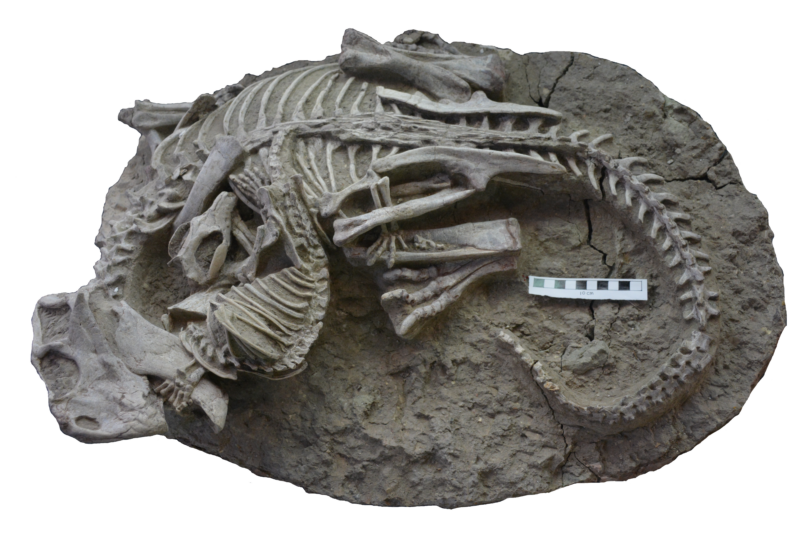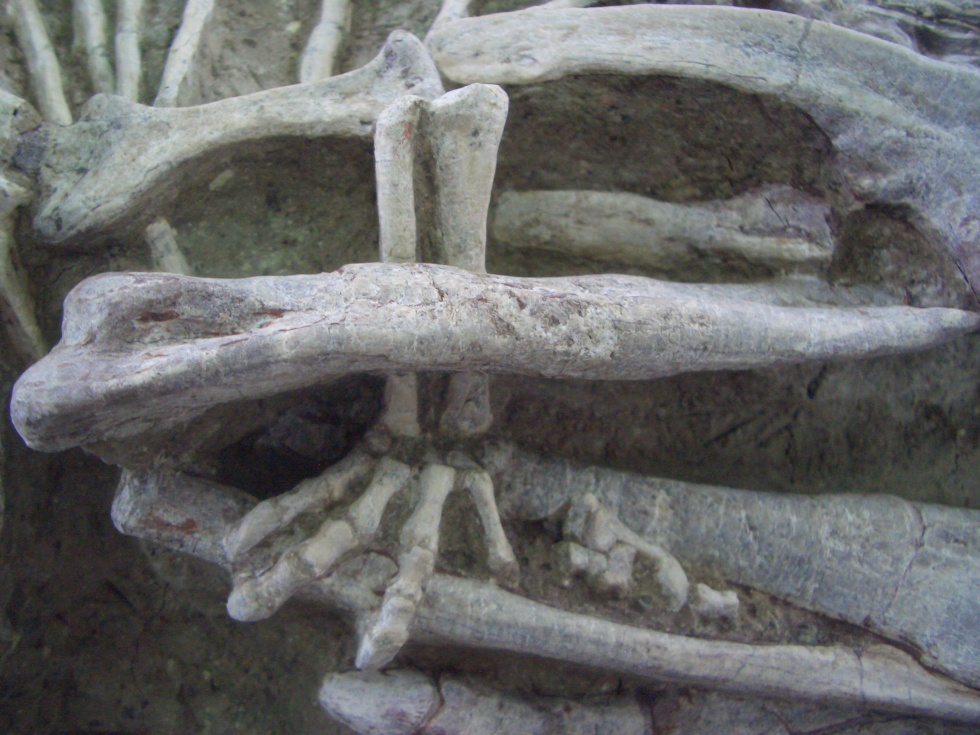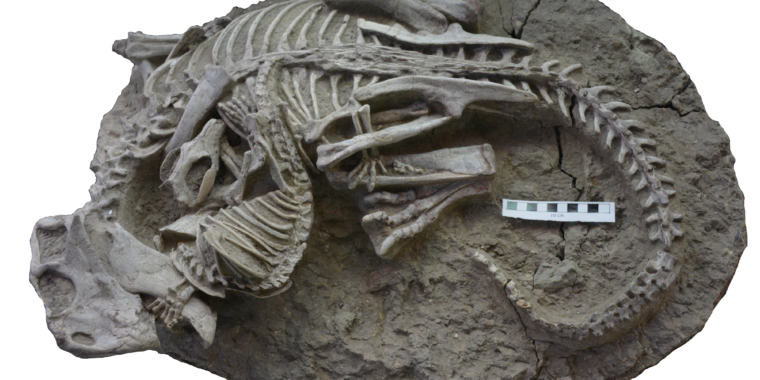
Gang Han
A new fossil described this week captures two intertwined animals caught in a life-or-death struggle right before both were entombed in a volcanic event. Published in Scientific Reports this Tuesday, the fossil doesn’t capture one dinosaur attacking another—rather, the predator in this case is a smaller mammal known as Repenomamus robustus, and it died with its teeth clamped upon the herbivorous Psittacosaurus lujiatunensis, a dinosaur three times its size.
Gut contents from a Repenomamus fossil described in 2005 prove this same mammalian species ate very young and considerably smaller Psittacosaurus. But the remarkable fossil revealed today is the first evidence of any Cretaceous mammal attacking a larger dinosaur. It’s an astounding snapshot of ancient behavior, challenging previous assumptions of predator/prey dynamics millions of years ago.
A final struggle
These two species in the fossil couldn’t be more different. Psittacosaurus is a type of bipedal ceratopsian dinosaur—an early relative of dinosaurs such as Triceratops—with a large beak-like snout and spiky tail bristles. This was a herd animal, and it’s the most commonly found fossil in the Lujiatun Member of the Lower Cretaceous Yixian Formation of China. This particular Psittacosaurus was approximately 6.5–10 years old when it died.
Repenomamus robustus was an early mammal approximately the size and weight of a Virginia opossum. Its left paw is seen grabbing the dislocated lower jaw of the dinosaur, and the two animal’s hindlimbs are tangled. Because Repenomamus died while biting the dinosaur, the authors couldn’t use its teeth to determine its age. However, they concluded that it was almost an adult based on its fused long bones. This voracious little mammal was a mere 1.42–3.43 kg (approximately three to seven lbs.), Yet its prey was 6–10.6 kg (13–23 lbs).
Two of Repenomamus’ ribs may be broken, but whether this occurred in its struggle with the dinosaur or through the fossilization process is unknown.

Gang Han
This extraordinary fossil was discovered in the aforementioned Lujiatun Member of the Lower Cretaceous Yixian Formation of China in 2012 by a local farmer. It’s an area known as the “Chinese Pompeii,” a nod to the Italian archaeological site, for its level of exquisite fossil flora and fauna that were preserved due to volcanic activity.
The authors propose that the dinosaur and mammal were quickly overcome by a lahar—a “volcanic debris flow, which occurs after an eruption, via hydraulic reworking of the deposited ash,” co-author Jordan Mallon explained in an email to Ars.
But wouldn’t such a debris flow not only impact the positioning of the animals but also transport them from where they died? At the very least, wouldn’t the animals have noticed something that large and dangerous racing toward them? Not according to a 2007 paper describing a cluster of young Psittacosauruses preserved in the same manner and from the same rock formation in China.
“These kinds of flows still happen today and can bury entire villages quite rapidly,” Mallon offered. “We know of other dinosaurs from the Lujiatun beds, including the sleeping Mei long, which indicates that such animals were not [awakened] by the debris flow(s). In the case of the fossil we describe, I would argue that the animals were otherwise [too] occupied to notice the incoming mudflow.”

